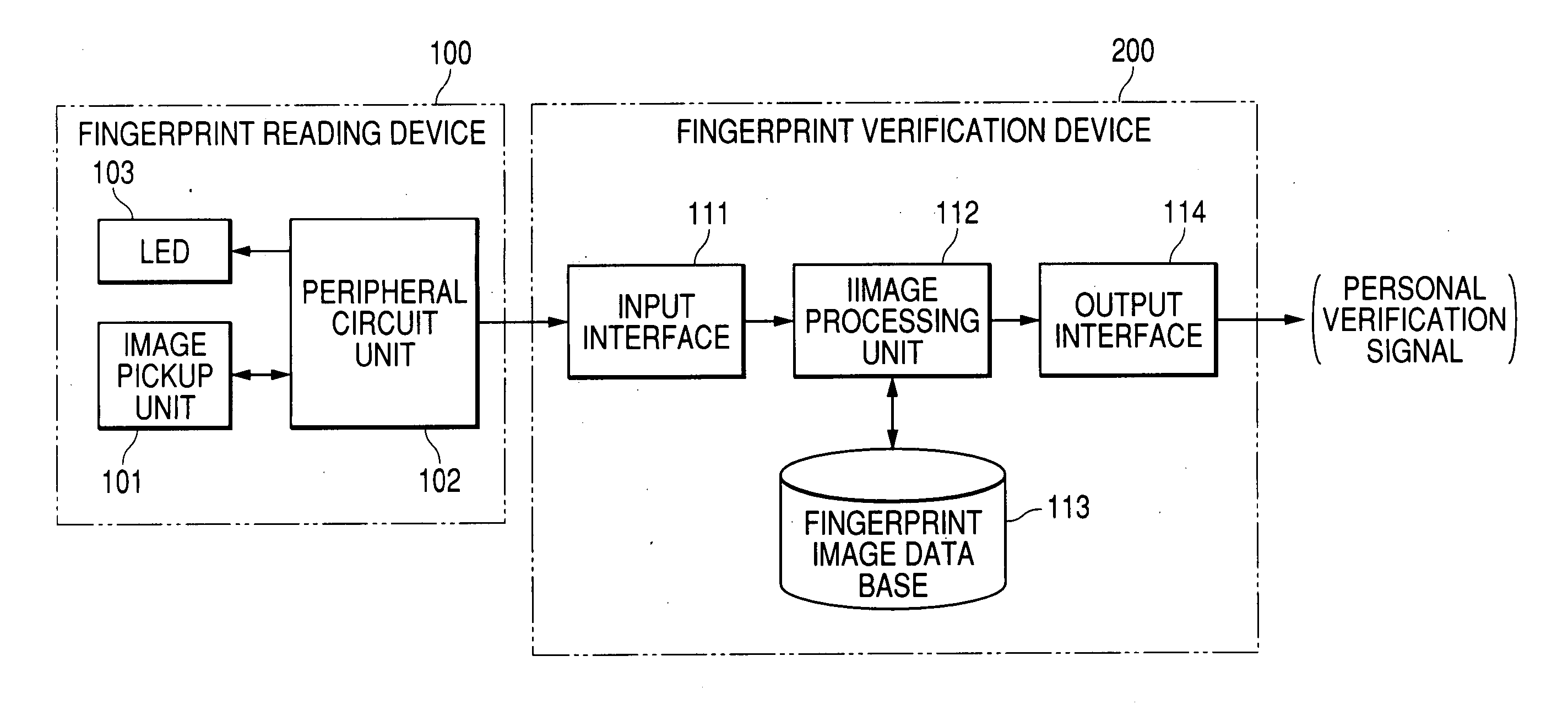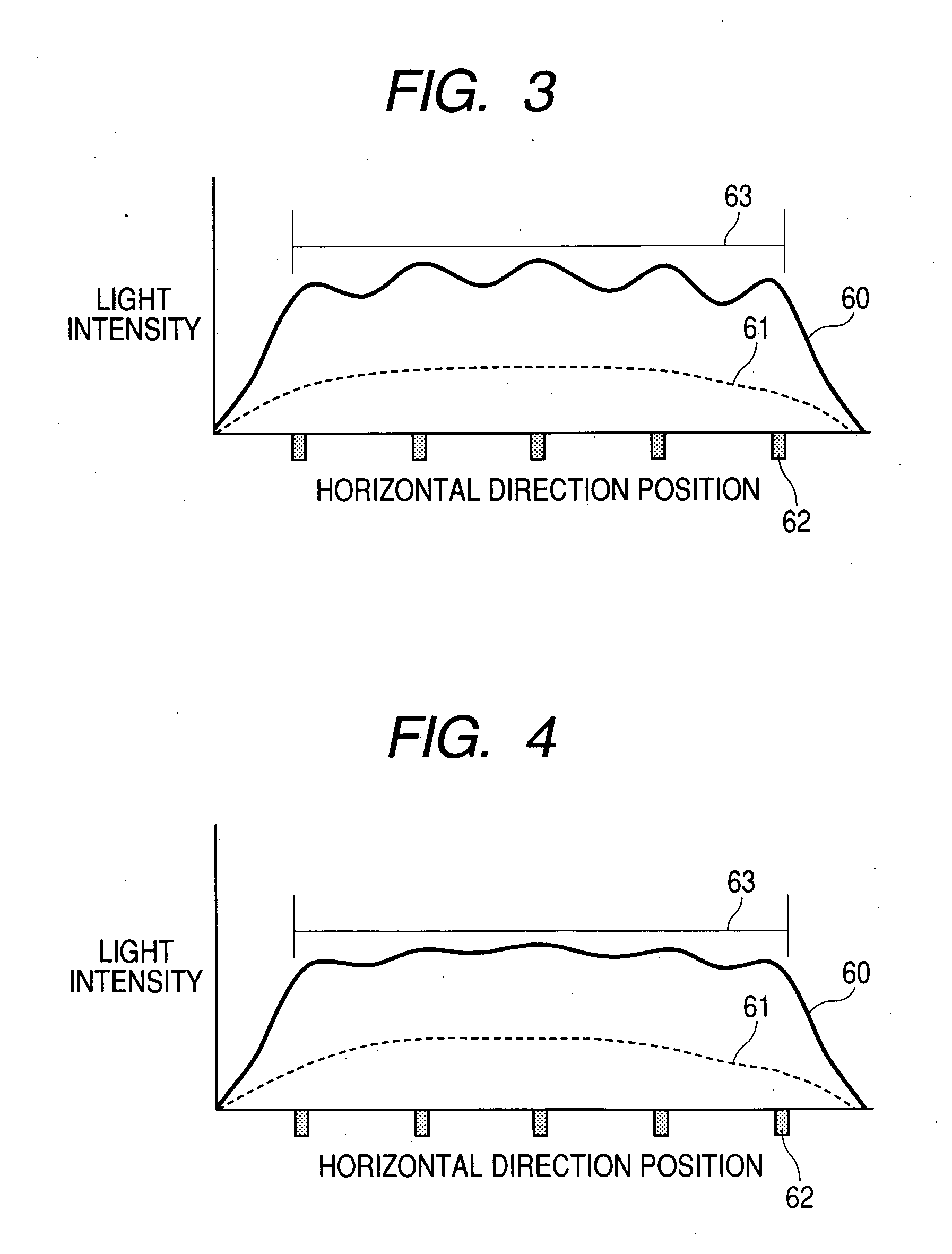Fingerprint reading device and personal verification system
- Summary
- Abstract
- Description
- Claims
- Application Information
AI Technical Summary
Benefits of technology
Problems solved by technology
Method used
Image
Examples
first embodiment
[0048]FIG. 1 is a schematic sectional view of the fingerprint reading device in a first embodiment of the present invention. Further, FIG. 2 is an oblique view of the fingerprint reading device in the first embodiment of the present invention.
[0049] In the fingerprint reading device shown in FIGS. 1 and 2, a solid state image pickup substrate 1 and a LED chip 10 are arranged on a wiring substrate 3. The solid state image pickup substrate 1 is mounted with a plurality of solid state image pickup elements 1a arranged in a line. A LED chip 10 has a LED which is light irradiating means for irradiating at least either one from among an infrared light and a near infrared light.
[0050] The solid state image pickup substrate 1, as shown in FIG. 2, has an electrode unit arranged at an end portion in a longitudinal direction electrically connected to a wiring 3a on a wiring substrate 3 by a wire 21. Similarly, the LED chip 10 has its electrode unit also electrically connected to the wiring 3...
second embodiment
[0067]FIG. 7 is a schematic sectional view of a fingerprint reading device in a second embodiment of the present invention. Further, FIG. 8 is an oblique view of the fingerprint reading device in the second embodiment of the present invention.
[0068] While the fingerprint reading device in the second embodiment shown in FIGS. 7 and 8 has entirely the same constitution as the fingerprint reading device (see FIGS. 1 and 2) of the first embodiment, moreover, LED columns constituting light irradiating means are formed both up and down of a sub scanning direction (vertical direction) in a solid state image pickup element 1a. That is, the LED column of the present embodiment, as shown in FIG. 8, has a LED chip 10 arranged in a wiring substrate3 similarly to the first embodiment and its electrode unit is formed by being electrically connected to a wiring portion of a wiring substrate 3 by a wire 12, and at the same time, a second LED column constituted by LED chips 13 is formed above for t...
third embodiment
[0071] Next, an embodiment of a personal verification system including the above described fingerprint reading device will be described with reference to FIGS. 9 and 10.
[0072]FIG. 9 is a schematic block diagram of a personal verification system in a third embodiment of the present invention. Further, FIG. 10 is a schematic block diagram of a fingerprint reading device 100 constituting the personal verification system in the third embodiment.
[0073] The personal verification system shown in FIG. 9 comprises: the fingerprint reading device 100 comprising an image pickup unit 101 constituted by a solid state imaging senor 1a, a peripheral circuit unit 102 thereof, and a LED 103 mounted in a LED chip 10; and a fingerprint verification unit 200 which is connected to the fingerprint reading device 100 and performs a fingerprint verification.
[0074] The peripheral circuit unit 102, for example, is formed on a solid state image pickup element substrate 1, and as shown in FIG. 10, is consti...
PUM
 Login to View More
Login to View More Abstract
Description
Claims
Application Information
 Login to View More
Login to View More - R&D
- Intellectual Property
- Life Sciences
- Materials
- Tech Scout
- Unparalleled Data Quality
- Higher Quality Content
- 60% Fewer Hallucinations
Browse by: Latest US Patents, China's latest patents, Technical Efficacy Thesaurus, Application Domain, Technology Topic, Popular Technical Reports.
© 2025 PatSnap. All rights reserved.Legal|Privacy policy|Modern Slavery Act Transparency Statement|Sitemap|About US| Contact US: help@patsnap.com



